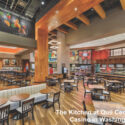
The day of the billion-dollar resort casino is over… Or is it? The last year demonstrated that while careful consideration will be given to projects that cost more than 0 million, it’s not a given that those projects will be banned forever.
In the Bahamas—hardly a hotbed of gaming activity—the owners of the Baha Mar project, which had been sidelined for several years due to the recession, broke ground in February 2011 on a resort that is estimated to cost more than $3 billion. Led by developer Sarkis Izmirlian, the development was abandoned by Caesars Entertainment (then Harrah’s Entertainment) in 2009, but an innovative financing plan brought it back to life. The group has received the bulk of its financing from the Export-Import Bank of China, known as the Exim Bank, with construction by the China State Construction Engineering Corporation, eager to show its prowess as a builder.
The massive resort complex will include six hotels with a total of 3,800 rooms, a 50,000-square-foot “retail village,” an 18-hole Jack Nicklaus signature golf course, three signature spas, the largest convention center in the Bahamas, 200,000 square feet of meeting space, and a 100,000-square-foot casino—the largest in the Caribbean, twice the size of the current casino king, Atlantis on nearby Paradise Island.
Moving to Atlantic City, the stalled Revel project was given new life when Governor Chris Christie reiterated his support of the slumping Boardwalk town by rejecting gaming in any other part of the state, taking over the city’s casino district to be operated by the state, and granting tax incentives to Revel’s developers. With Christie’s encouragement, investors returned to Revel to provide the $1 billion to finish the interior of the property, on top of the more than $1 billion already spent to build the shell.
And of course in Asia, the sky is the limit. In 2011, the two multibillion-dollar integrated resorts opened in Singapore: Genting’s Resorts World Sentosa and Las Vegas Sands’ Marina Bay Sands. The return on investment was doubted, but results from just gaming operations have eased the concerns of the investors.
In Macau, the billion-dollar project is also alive and well in a jurisdiction where revenue growth continues to break records. Galaxy Macau opened in Macau’s Cotai region in May. The completion of Las Vegas Sands’ parcels 5 and 6 is scheduled for late 2011, adjacent to the company’s Venetian Macao. And the launch of a new project by Wynn Resorts in Cotai will happen soon, with a final price tag of more than $3 billion.
So we needn’t have been worried about the billion-dollar project. It is alive and well. While they may no longer be built all at once—phasing could be the answer (although all the projects mentioned in this article are not phased)—billion-dollar projects will continue to play a role in the development of the casino resort for many years to come.















